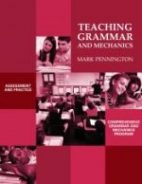The Seven Essay Writing Rules
Essays have different rules than do stories, letters, poems, or journal writing. Essays respond to a writing prompt or writing topic. The writer is required to develop a thesis statement in the introductory paragraph, then follow with at least two body paragraphs which address the thesis statement, then end with a concluding paragraph.
The Common Core Writing Standards divides essays into argumentative and informational/explanatory. Argumentative essays argue a position or point of view; informational/ explanatory essays explain and analyze. Each of these types of essays focuses on the subject of the writing prompt and follows the following essay writing rules.
Keep in mind that essays are a very formal type of writing. Although they may certainly express opinions, essays present evidence in a fair and balanced manner. Think of presenting evidence in an essay as an attorney would present evidence in a court of law. All of the traditional rituals have to be followed. The attorney (writer) has introductory remarks (introductory paragraph) in which a verdict (think thesis statement) is stated. Next, the attorney (writer) presents the main points of the case and the evidence that supports them (body paragraphs). Finally, the attorney (writer) presents the closing arguments (conclusion paragraph).
Here are the seven essay writing rules:
1. Write in complete sentences. Intentional fragments, such as “Right?” don’t belong in essays.
2. Write in third person. Talk about the subject of the essay. Don’t personalize with first person pronouns such as I, me, my, mine, we, us, our, ours, ourselves. Don’t talk to the reader with second person pronouns such as you, your, yours, yourself, yourselves. The essay is to be objective (fair and balanced), not subjective (personalized). Rid essays of “I think,” “I believe,” and “In my opinion.”
3. Do not abbreviate. Abbreviations are informal and serve as short-cuts, so they don’t belong in essays. So write United States, not U.S. in essays.
4. Do not use slang, such as kids. Use official, or formal, words, such as children.
5. Do not use contractions. Again, essays are very formal, so write “do not” rather than “don’t.”
6. Do not use figures of speech. Be direct and precise in essay writing. Essays do not use poetic devices or idiomatic expressions. For example, don’t write “He let the cat out of the bag.” Instead, say “He shared a secret.”
7. Do not over-use the same words or phrases. For example, avoid over-use of the “to-be” verbs: is, am, are, was, were, be, being, been.
*****

TEACHING ESSAYS BUNDLE
The author’s TEACHING ESSAYS BUNDLE includes the three printable and digital resources students need to master the CCSS W.1 argumentative and W.2 informational/explanatory essays. Each no-prep resource allows students to work at their own paces via mastery learning. How to Teach Essays includes 42 skill-based essay strategy worksheets (fillable PDFs and 62 Google slides), beginning with simple 3-word paragraphs and proceeding step-by-step to complex multi-paragraph essays. One skill builds upon another. The Essay Skills Worksheets include 97 worksheets (printables and 97 Google slides) to help teachers differentiate writing instruction with both remedial and advanced writing skills. The Eight Writing Process Essays (printables and 170 Google slides) each feature an on-demand diagnostic essay assessment, writing prompt with connected reading, brainstorming, graphic organizer, response, revision, and editing activities. Plus, each essay includes a detailed analytical (not holistic) rubric for assessment-based learning.









